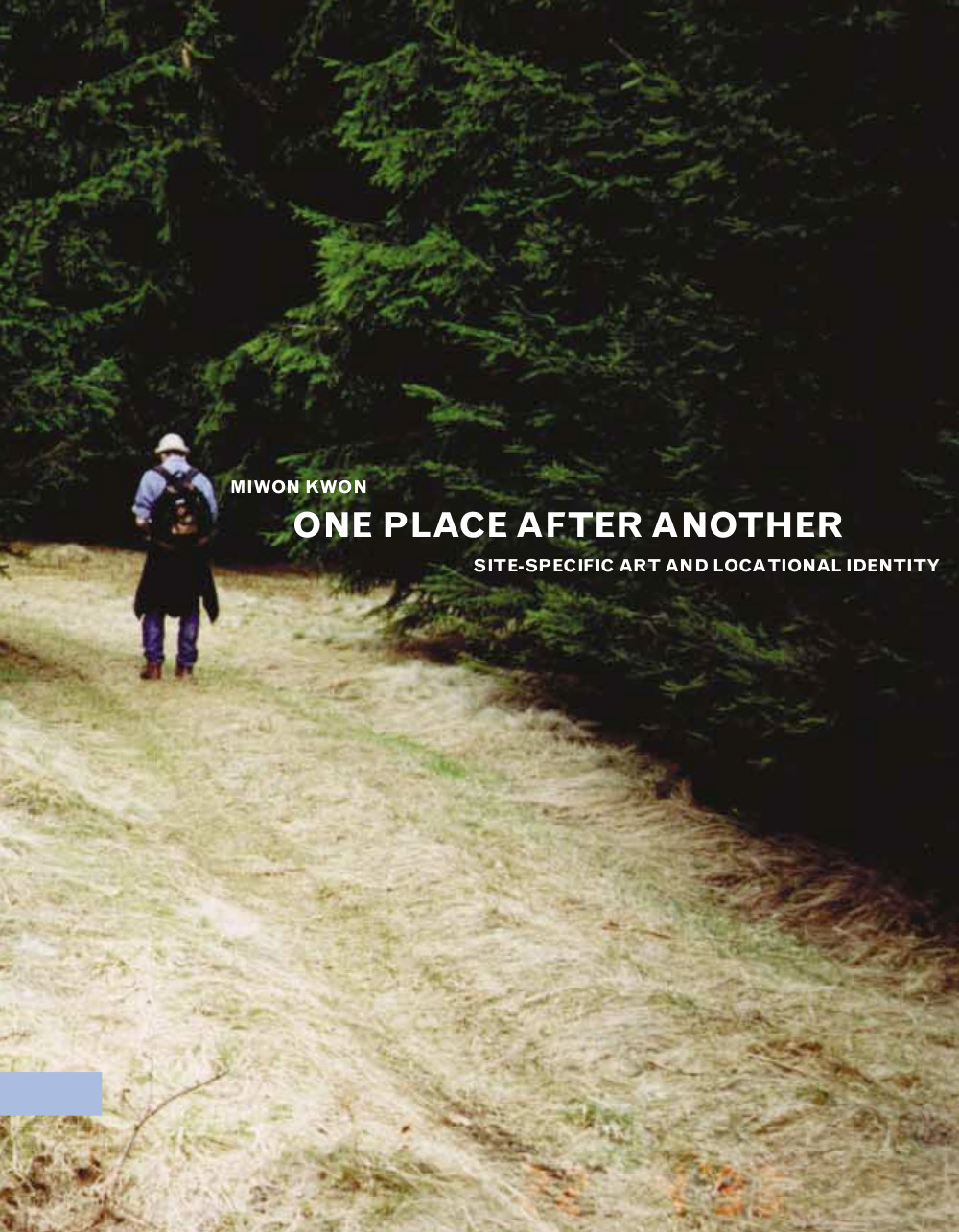Miwon Kwon: One Place after Another: Site-Specific Art and Locational Identity (2002)
Filed under book | Tags: · art, art history, collaboration, collaborative art, institutional critique, participation, site-specific art

“Site-specific art emerged in the late 1960s in reaction to the growing commodification of art and the prevailing ideals of art’s autonomy and universality. Throughout the 1970s and 1980s, as site-specific art intersected with land art, process art, performance art, conceptual art, installation art, institutional critique, community-based art, and public art, its creators insisted on the inseparability of the work and its context. In recent years, however, the presumption of unrepeatability and immobility encapsulated in Richard Serra’s famous dictum “to remove the work is to destroy the work” is being challenged by new models of site specificity and changes in institutional and market forces.
One Place after Another offers a critical history of site-specific art since the late 1960s and a theoretical framework for examining the rhetoric of aesthetic vanguardism and political progressivism associated with its many permutations. Informed by urban theory, postmodernist criticism in art and architecture, and debates concerning identity politics and the public sphere, the book addresses the siting of art as more than an artistic problem. It examines site specificity as a complex cipher of the unstable relationship between location and identity in the era of late capitalism. The book addresses the work of, among others, John Ahearn, Mark Dion, Andrea Fraser, Donald Judd, Renee Green, Suzanne Lacy, Inigo Manglano-Ovalle, Richard Serra, Mierle Laderman Ukeles, and Fred Wilson.”
Publisher MIT Press, 2002
ISBN 0262112655, 9780262112659
230 pages
PDF (updated on 2012-8-3)
Comment (0)Charles Green: The Third Hand. Collaboration in Art from Conceptualism to Postmodernism (2001)
Filed under book | Tags: · art, art criticism, art history, collaboration, collaborative art, conceptual art, participation, postmodernism

A major reevaluation of collaboration’s role in art since 1968.
The lone artist is a worn cliché of art history but one that still defines how we think about the production of art. Since the 1960s, however, a number of artists have challenged this image by embarking on long-term collaborations that dramatically altered the terms of artistic identity. In The Third Hand, Charles Green offers a sustained critical examination of collaboration in international contemporary art, tracing its origins from the evolution of conceptual art in the 1960s into such stylistic labels as Earth Art, Systems Art, Body Art, and Performance Art. During this critical period, artists around the world began testing the limits of what art could be, how it might be produced, and who the artist is. Collaboration emerged as a prime way to reframe these questions.
Green looks at three distinct types of collaboration: the highly bureaucratic identities created by Joseph Kosuth, Ian Burn, Mel Ramsden and other members of Art & Language in the late 1960s; the close-knit relationships based on marriage or lifetime partnership as practiced by the Boyle Family—Anne and Patrick Poirier, Helen Mayer Harrison and Newton Harrison; and couples-like Christo and Jeanne-Claude, Gilbert & George, or Marina Abramovic and Ulay—who developed third identities, effacing the individual artists almost entirely. These collaborations, Green contends, resulted in new and, at times, extreme authorial models that continue to inform current thinking about artistic identity and to illuminate the origins of postmodern art, suggesting, in the process, a new genealogy for art in the twenty-first century.
Published by the University of Minnesota Press, 2001
ISBN 0868405884, 9780868405889
248 pages
PDF (updated on 2012-8-3)
Comment (1)
